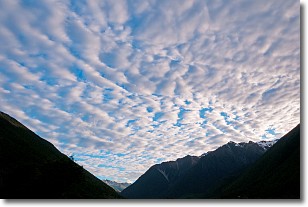Weather Alert in Georgia
Flood Advisory issued May 13 at 12:24AM EDT until May 13 at 6:15AM EDT by NWS Greenville-Spartanburg SC
AREAS AFFECTED: Rabun, GA; Macon, NC
DESCRIPTION: * WHAT...Nuisance to Minor flooding caused by excessive rainfall is expected. * WHERE...Portions of northeast Georgia, including the following county, Rabun and western North Carolina, including the following county, Macon. * WHEN...Until 615 AM EDT. * IMPACTS...Nuisance flooding of low-lying areas adjacent to streams and other poor-drainage areas, including farmland, parks, greenways, boat-access areas, golf courses, underpasses, and parking lots. Isolated, shallow flows over roadways is possible. A few flood-prone, low-water crossings may become impassible. A small culvert washout or two is possible. * ADDITIONAL DETAILS... - At 1223 AM EDT, Another round of training thunderstorms has developed across central and western Rabun County and southwestern Macon County over the past 60 minutes. This has produced a quick 1-1.5 inches of rainfall over soils already saturated from heavy rainfall which occurred on Monday. Storm-total rainfall of 3-6 inches has been observed, which has caused significant rises on area streams. New rapid stream rises are imminent, including along Tiger Creek between Clayton and Lakemont, the headwaters of the Tallulah River in the Persimmon Creek community, the Little Tennessee headwaters near Dillard and Otto, and the headwaters of the Nantahala River near Rainbow Springs. Areas of nuisance flooding may develop along these streams and associated tributaries over the next 1-3 hours. - If heavy rainfall persists over the next 60-90 minutes, a Flash Flood Warning may be issued. If rapid stream rises are observed, avoid all adjacent low-lying areas and seek higher ground. Drivers are urged to avoid any flooded roadways and Turn Around Don't Drown. - Some locations that may experience nuisance flooding include... Clayton, Mountain City, Tiger, Dillard, Sky Valley, Black Rock Mountain State Park, Lakemont, Otto, and Rainbow Springs. - http://www.weather.gov/safety/flood
INSTRUCTION: Be especially cautious at night when it is harder to recognize the dangers of flooding. In hilly terrain there are hundreds of low water crossings which are potentially dangerous in heavy rain. Do not attempt to cross flooded roads. Find an alternate route. Flooding is occurring or is imminent. It is important to know where you are relative to streams, rivers, or creeks which can become killers in heavy rains. Campers and hikers should avoid streams or creeks.
Want more detail? Get the Complete 7 Day and Night Detailed Forecast!
Current U.S. National Radar--Current
The Current National Weather Radar is shown below with a UTC Time (subtract 5 hours from UTC to get Eastern Time).

National Weather Forecast--Current
The Current National Weather Forecast and National Weather Map are shown below.

National Weather Forecast for Tomorrow
Tomorrow National Weather Forecast and Tomorrow National Weather Map are show below.

North America Water Vapor (Moisture)
This map shows recent moisture content over North America. Bright and colored areas show high moisture (ie, clouds); brown indicates very little moisture present; black indicates no moisture.

Weather Topic: What is Snow?
Home - Education - Precipitation - Snow
 Next Topic: Stratocumulus Clouds
Next Topic: Stratocumulus Clouds
Snow is precipitation taking the form of ice crystals. Each ice crystal, or snowflake,
has unique characteristics, but all of them grow in a hexagonal structure.
Snowfall can last for sustained periods of time and result in significant buildup
of snow on the ground.
On the earth's surface, snow starts out light and powdery, but as it begins to melt
it tends to become more granular, producing small bits of ice which have the consistency of
sand. After several cycles of melting and freezing, snow can become very dense
and ice-like, commonly known as snow pack.
Next Topic: Stratocumulus Clouds
Weather Topic: What are Stratus Clouds?
Home - Education - Cloud Types - Stratus Clouds
 Next Topic: Wall Clouds
Next Topic: Wall Clouds
Stratus clouds are similar to altostratus clouds, but form at a
lower altitude and are identified by their fog-like appearance, lacking the
distinguishing features of most clouds.
Stratus clouds are wider than most clouds, and their base has a smooth, uniform
look which is lighter in color than a nimbostratus cloud.
The presence of a stratus cloud indicates the possibility of minor precipitation,
such as drizzle, but heavier precipitation does not typically arrive in the form
of a stratus cloud.
Next Topic: Wall Clouds
Current conditions powered by WeatherAPI.com




